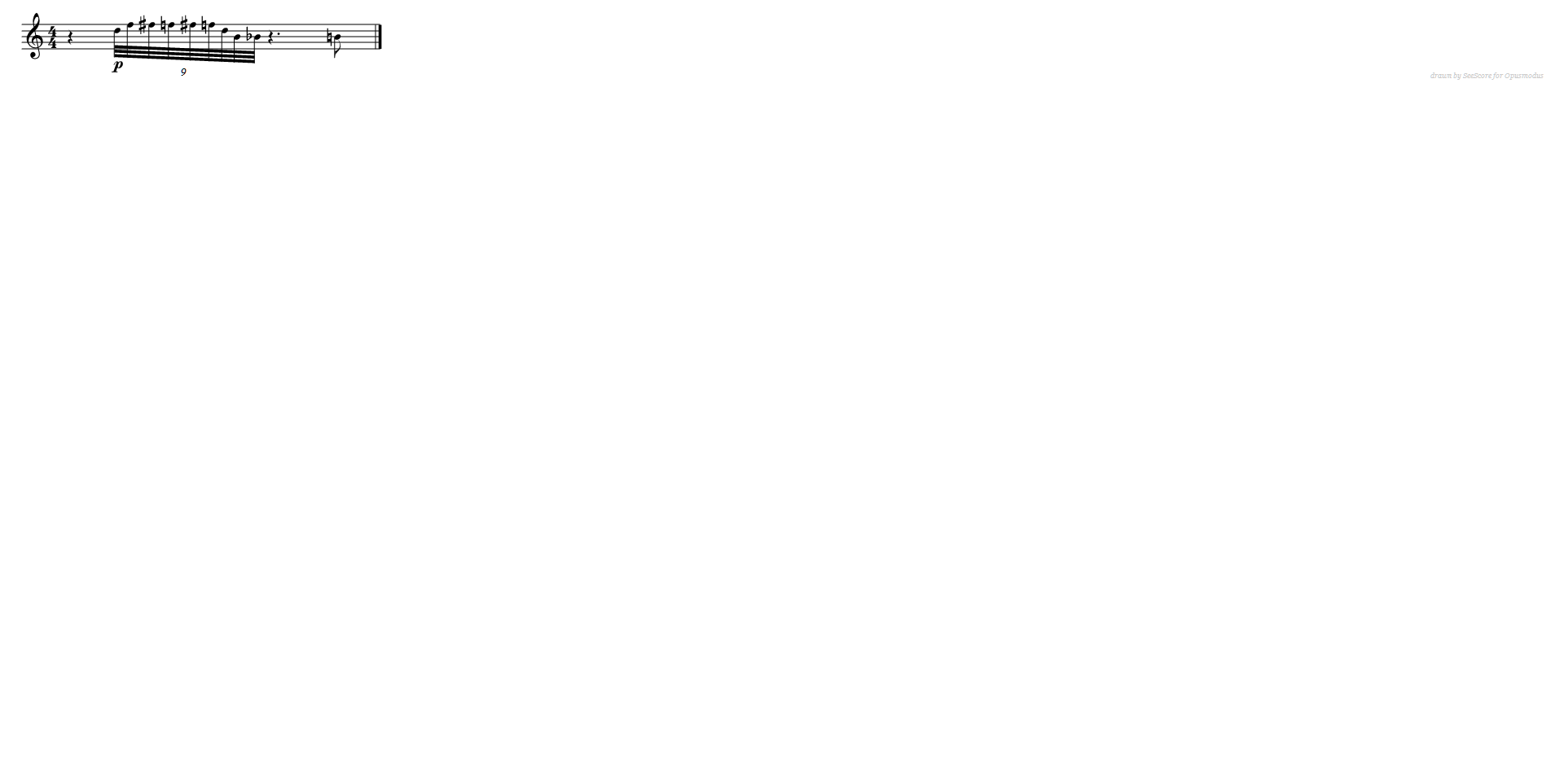Search the Community
Showing results for tags 'counterpoint'.
-
How to use a user defined function, defined in my def-unfold-set "my-mehods" (in-package :Opusmodus), in the counterpoint function? Example (setf test-pattern '(e c4 d4 e4 f4 g4 a4 b4 c5)) (unfold ' my-mehods '(amb-c6b6) test-pattern) ;; works perfectly, shifting up pitches However how do I use this function amb-c6b6 in the counterpoint function? #|1|# ((2 - 6 5) :methods ( amb-c6b6 - (r t-12) t-12)) ;;error, how to unfold amb-c6b6? Thanks for any idea!
- 8 replies
-
- unfold
- counterpoint
-
(and 1 more)
Tagged with:
-
I have been studying and working with Stephane's very helpful TRIO project at the website. If you do not know it, I highly recommend it. There are some very useful methods in his discussion. The first material above is the rhythm of a test of counterpoint :sequence as INPUT to the function. It is (3w = = ) (q q q q) The OUTPUT, the second line, changes the notation. My general question is, why is there this change? My observations suggest that with more complex rhythmic material (9:8 for example) the resulting output can become a little less assured in the translation from input OMN lengths to the notated output from the counterpoint function. In this case of 9:8 the 9 is removed from the notation all together and the rhythm appears changed, resolving to 8 32nd notes plus 1 on the wrong beat. Here is the OMN notation of the material as input to counterpoint, the following snippet is the output from counterpoint :sequence. (-q 9q = = = = = = = = -q. e) With all three instruments of the trio using the same rhythmic material, there is an interesting and hard to understand "drift" of the rhythm with successive iterations. What is expected is precisely the same rhythm at the same metrical position in each measure.
-
Hello! The example below has been taking several minutes to compile, eventually crashing Opusmodus. Would someone be willing to look at the code and let me know what's causing this? Thank you so much! (setf pattern1 (length-augmentation 2'((-h. q g4) (q. g4 e e4 q e4 -q) (-h. q g4) (q. g4 e d4 q d4 -q) (-h. q e4) (q f4 g4 a4 b4) (h. g4 -q)))) (setf pattern1a (length-augmentation 3 '((-h. q g4) (q. g4 e e4 q e4 -q) (-h. q g4) (q. g4 e d4 q d4 -q)))) (setf scale '(c4 eb4 f4 g4 ab4)) (setf pattern1-scale (tonality-map '(scale :map octave :closest up) pattern1)) (setf pattern1a-scale (tonality-map '(scale :map octave :closest up) pattern1a)) (setf voicesA (counterpoint (list pattern1-scale pattern1-scale pattern1a-scale) '(((1 2 3) :methods ( (dl1) (r dl1 t-12 pr1) (d1 t-24 pr1) ) )))) (ps 'gm :hn (list (1~ voicesA)) :tbn (list (2~ voicesA)) :tbn (list (3~ voicesA)) :time-signature '(4 4) )
- 4 replies
-
- counterpoint
- compilation
-
(and 1 more)
Tagged with:








